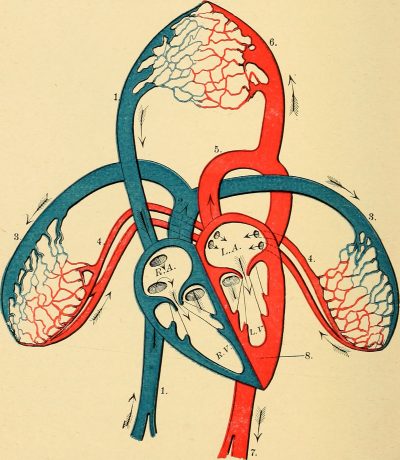Transport of Fluids within the Body

(Credit: Jerome Walker, 1900; Public Domain)
Thus far we have discussed systems that support the body and allow movement, and systems that allow us to obtain needed materials from the environment. Now we turn our attention to the systems of the body that allow us to transport materials such as oxygen, nutrients, and water. You may have guessed that we will investigate the structure and function of the cardiovascular system (CVS), which includes the heart, blood vessels, and blood. We will also explore the lymphatic system, which is sometime described as the little-known cousin of the CVS. This system should not be underestimated, however. As you’ve learned, no lipids can be absorbed from our food without specialized lymphatic capillaries called lacteals. In addition, the lymphatic system has two other critical roles. The first involves returning fluid to the bloodstream after the process of capillary exchange. The second involves providing a “home base” for the immune system, and this function will be explored in a later section of the text.. In this section of the text we will also investigate the urinary system. This system might have also been included in section of the book dealing with exchange with the environment, since part of the urinary system’s functioning involves, well, urination. It has been included here to emphasize that this system’s primary role is to filter metabolic waste out of the blood; urine is simply filtered blood.
